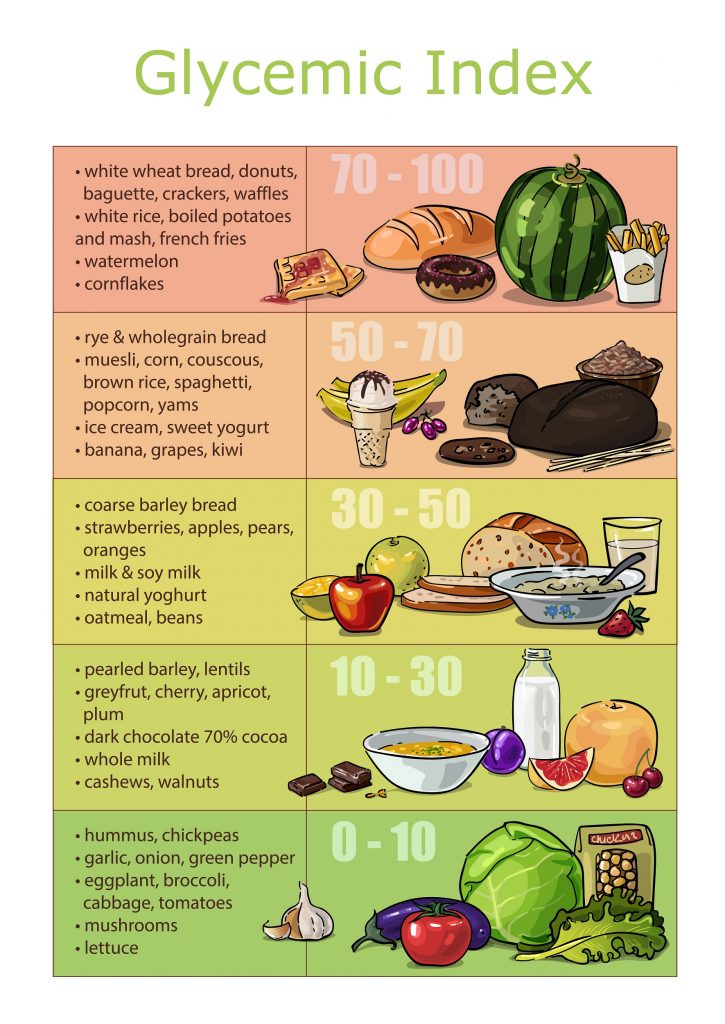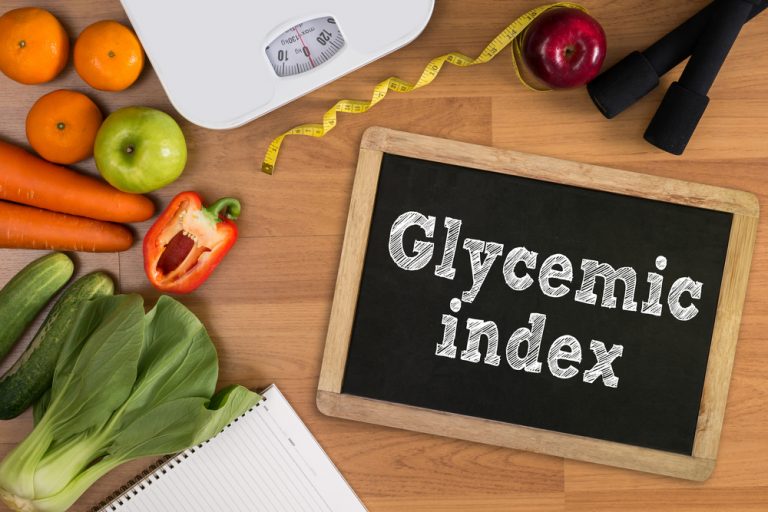The Glycemic Index (GI) is an indicator of the rate at which sugar levels increase after consumption of a product, compared to the rate at which sugar levels increase after eating an identical portion of carbohydrates in pure glucose. The Glycemic Index, therefore, classifies products according to how blood glucose levels change after consumption. It basically refers only to foods that are a source of carbohydrates. This classification makes it possible to divide foods into 3 groups with a low (GI < 50), a medium (55-70) and a high glycemic index (GI > 70).
Dietary principles and glycemic load
In addition, the concept of the glycemic load was also distinguished. It is a factor that allows determining the content and quality of carbohydrates in food. Products with the high glycemic load will cause a higher increase in blood sugar level than those with low load.
Knowing the concepts of index and load, it is, therefore, necessary to move on to the principles of a low-glycemic index diet. Its basic assumption is to consume only products with a low GI, i.e. those with a GI < 50. They increase the sugar level slightly and keep it constant for several hours, which is very beneficial for the proper functioning of the body. This prevents fatigue, weakness, drowsiness and a constant feeling of hunger. This type of diet protects against unhealthy and high-calorie snacks between designated meals, thus supporting effective weight loss.
What to eat on a low-glycemic diet?
An important aspect of a low-glycemic diet is the fact that the GI of products changes depending on the degree of their culinary processing. For example, the glycemic index of raw carrots is low and when cooked, it is high. The GI of processed cereal products, on the other hand, increases when they are cooked, so it is advisable to eat them only al dente.
The products with a low glycemic index are recommended in the diet are those that are a source of animal protein (their GI is 0 because they do not contain carbohydrates), eggs, meat, fish, seafood, cheese and dairy products. This includes vegetables such as eggplant, Brussels sprouts, onions, zucchini, chicory, asparagus beans, cabbage and sauerkraut, cauliflower, cucumber, leek, radishes, lettuce, celeriac and ribbed celery, asparagus, spinach and legumes (soy, white, black beans, green peas).
All kinds of mushrooms also have a low glycemic index as well as cereal products of wild and brown rice, buckwheat groats, wholegrain pasta, bran, uncooked oat flakes, wholegrain bread (e.g. wholemeal, rye). Plant and animal fats, e.g. butter, margarine, olive oil, vegetable oils, should also be mentioned here.
The GI diet allows the consumption of all kinds of nuts, seeds and seeds, low-sweetened jams and marmalades without sugar. You can also reach for unsweetened drinks, as well as all spices and herbs.
High Glycemic Index - products with a high GI
- vegetables, such as boiled potatoes and beets, corn, pumpkin
- fruits
- most of the dried fruits as well as figs, raisins, dates
- cereal preparations spelt bread, wheat bread, light rolls and bread, rice waffles, muesli, prepared rice, white rice, pasta, small groats (e.
- sugar, honey and all kinds of food that contain them, including sweets, salty snack, confectionery, chocolate butter, highly sweetened jams, ice cream
- Sweetened drinks, fruit juices, alcohols, e.g. orange juice, colourful carbonated and non-carbonated drinks, liqueurs

Low-glycemic index diet - effects and safety
A diet with a low glycemic index is one of the safer methods of weight loss. It does not assume any significant restrictions or radical reduction in the calories of everyday diet. It excludes products that are commonly considered unhealthy. A low-glycemic diet is consistent with the principles of proper, rational nutrition, because it allows the consumption of food from different groups, and therefore does not pose a risk of food shortages.
The use of this diet can help to lose weight effectively and permanently. The presence of products with low GI in the diet allows maintaining blood glucose levels at a constant level, which prevents hunger pangs, which is often encountered when using low-calorie diets.
A low GI diet is a good solution, especially if we want to lose weight safely and healthily. Not only will it help you lose weight permanently and maintain your dream body weight, but most importantly, it will improve your health and general well-being.






